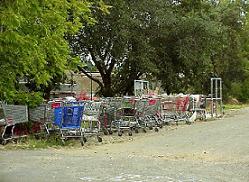United We Can!
Neighborhood and city groups team up to revitalize two blighted communities
It's the bane of every John Q. Homeowner—that one house on the block with a missing shutter and peeling paint. In a neighborhood filled with geranium baskets and meticulously pruned azaleas, it's the house whose lawn is littered with rusty car parts and old tires. More than just an eyesore, a run-down house can lower the value of other homes on the block. And, when blight spreads throughout an entire neighborhood, the effect multiplies—businesses board up, residents move away, and crime rates soar. Often, the stalwart few residents who remain desire to restore their neighborhood but are financially or physically unable to do so alone. This is where neighborhood associations and Neighborhood Watch come into play.
By joining forces with Neighborhood Watch and other block- and community-level associations, citizens can generate the synergy needed to revitalize even the most dilapidated neighborhood. A unified and well-organized Watch group can exert clout when lobbying for government funding to refurbish housing or create parks. As “resident experts,” neighborhoods leaders can consult with officials to ensure these resources are allocated where they are most needed and, after revitalization is completed, partner with law enforcement to protect their investment by helping to keep crime at bay.
Featured below are two communities that have accomplished the seemingly impossible, transforming two crime-ridden, deteriorating neighborhoods into award-winning, model developments. One is located in a mid-sized city in northern California , the other in a major metropolitan area in the Midwest . The communities of Park DuValle and Parkview each have unique histories and received funding from different sources; however, these neighborhoods share three unbreakable common threads—strong block-level involvement, unwavering commitment to success, and community pride.
Louisville, Kentucky: Park DuValle
Over the years, Park DuValle has suffered many blows, but it is winning the fight—very fitting for a neighborhood that was the childhood home of boxing legend Muhammed Ali. The history of Park DuValle stretches back more than a century to the 1880s, when newly freed African Americans began moving from the Kentucky countryside to the city in search of jobs. Many settled in this southwest Louisville suburb, which was later dubbed “Little Africa.” The neighborhood grew despite setbacks, which included a devastating tornado in 1890 that destroyed nearly all the community's infrastructure. Undaunted, residents quickly rebuilt and, by 1917, Park DuValle boasted 700 homes and six churches. The population expanded as Park DuValle matured into a self-sufficient community with its own shops, bakeries, bank, and gas stations. A total of $15 million was spent in 1953 and 1958 to build two projects to house the growing population. The neighborhood began to decline during the late 1960s, when civic unrest and rising tensions led many local merchants to permanently close their doors. By the early 1980s, Park DuValle had earned the dubious reputation of being Louisville 's poorest and most dangerous neighborhood.
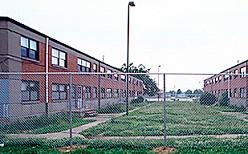 In 1994, the Housing Authority of Louisville (HAL) began efforts to halt the downward spiral by demolishing the city's then-crumbling housing projects and rebuilding Park DuValle into an attractive, mixed-income community. Planning for the revitalization of Park DuValle began in 1996, after the HAL was awarded a $20 million U.S. Department of Housing and Urban Development (HUD) HOPE VI grant. The HOPE VI program was a result of a report of the National Commission on Severely Distressed Public Housing submitted to Congress in August 1992. The Commission determined that about six percent of America 's 1.4 million existing public housing dwellings, including Park DuValle, was in “severely distressed” condition and recommended that Congress fund a 10-year program to correct this problem. Two months later, Congress appropriated the first $300 million for what was originally called the “Urban Revitalization Demonstration,” now HOPE VI. The HOPE program was based on the principles of New Urbanism, a philosophy that promotes the development of diverse, visually appealing communities in which people of different income levels can live, work, and interact. New urban design incorporates quality construction and focuses on smart transportation and accessibility. In contrast, Park DuValle's drab housing projects served only to alienate its residents from wealthier parts of the city, so much so that a HAL report described them as “warehouses for families entrapped in poverty.”
In 1994, the Housing Authority of Louisville (HAL) began efforts to halt the downward spiral by demolishing the city's then-crumbling housing projects and rebuilding Park DuValle into an attractive, mixed-income community. Planning for the revitalization of Park DuValle began in 1996, after the HAL was awarded a $20 million U.S. Department of Housing and Urban Development (HUD) HOPE VI grant. The HOPE VI program was a result of a report of the National Commission on Severely Distressed Public Housing submitted to Congress in August 1992. The Commission determined that about six percent of America 's 1.4 million existing public housing dwellings, including Park DuValle, was in “severely distressed” condition and recommended that Congress fund a 10-year program to correct this problem. Two months later, Congress appropriated the first $300 million for what was originally called the “Urban Revitalization Demonstration,” now HOPE VI. The HOPE program was based on the principles of New Urbanism, a philosophy that promotes the development of diverse, visually appealing communities in which people of different income levels can live, work, and interact. New urban design incorporates quality construction and focuses on smart transportation and accessibility. In contrast, Park DuValle's drab housing projects served only to alienate its residents from wealthier parts of the city, so much so that a HAL report described them as “warehouses for families entrapped in poverty.”
Additional funding for the $200 million Park DuValle project came from a community development block grant, city funding, and private investors. Before demolition began, members of the Park DuValle Neighborhood Advisory Committee sat down with HUD and city of Louisville officials and collaboratively drew up a plan for the 130-acre site that called for construction of 1,200 new single-family homes, duplexes, and apartments featuring traditional Louisville architectural elements. The biggest challenge the committee faced was to provide public housing for lower-income families while simultaneously attracting middle-income renters and homeowners as well as businesses.
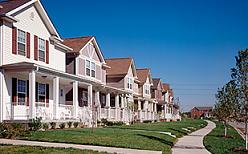 The new houses of the Park DuValle revitalization project feature inviting front lawns and porches.
The new houses of the Park DuValle revitalization project feature inviting front lawns and porches.
Since the plan's inception, 600 new apartment units have been built in Park DuValle, and the home-building phase is near completion. This once underserved community now has easy access to new area restaurants, a local medical center, and shopping. The changes to Park DuValle have not gone unnoticed. In 2000, the American Institute of Architects honored Park DuValle with its Regional and Urban Design Award, and the project was nominated as a finalist for the National Association of Home Builders' 2004 Best Urban Site Plan of the Year award.
Crime? Not on My Watch!
City officials and Park DuValle residents are working together to protect their new neighborhood by enhancing public safety. Neighborhood Watch participation in Louisville has grown steadily—from 300 to 450 groups—since program responsibility was assigned to the police department in 2005. Today, the program is a vital link between law enforcement and formerly distressed neighborhoods such as Park DuValle. “Block Watch members are fundamental to the work we do as police officers,” said Louisville Chief of Police Robert C. White. “They've taken ownership of their neighborhoods by taking a stand against criminal activity.”
The Louisville Neighborhood Watch program received an additional boost in 2006 when manufacturer Alcoa, Inc., presented the city with a $50,000 grant for the West Louisville Crime Prevention Project. This grant has allowed police officers and block leaders to canvass Park DuValle's subdivisions in order to offer crime prevention training and assess neighborhood safety. Residents whom officers deem to be at risk of becoming crime victims can request assistance with installation of windows, deadbolt locks, doorbells, and exterior lights. Officers also are working with volunteers to promote Watch membership and provide Neighborhood Watch signage. Community bonds have been further strengthened thanks to the Park DuValle Neighborhood Association, which organizes social and educational events for residents. Opportunities to participate in family fitness days and attend holiday parties at the neighborhood clubhouse have revived this once-troubled community. Neighborhood Watch block captain Letha Reed, who built a home near the Park DuValle development eight years ago, expresses a sentiment shared by many area residents: “I moved here to be close to my daughter, and I've never regretted my decision. I live on a nice, quiet street, and the area has become safer as well, thanks to good neighbors and responsive law enforcement.”
Redding, California: Parkview
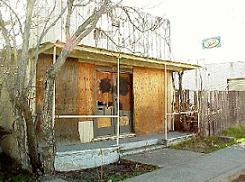
What a difference a decade makes. Ten years ago, “cottage charm, civic pride, and close-knit community” were not the nouns most people would have used to describe Parkview. Yet, it is these very qualities that led to it being selected as one of Cottage Living magazine's Top 10 Neighborhoods of 2008. First subdivided during the Great Depression, Parkview is one of Redding 's oldest communities. During the 1950s, it was known as a safe, blue-collar neighborhood that families were proud to call home, but geography led to one half of the neighborhood's gradual decline. Parkview is dissected by an irrigation canal that splits the community into eastern and western sections. Homes on the east side, which borders the Sacramento River , have historically been valued high while those on the west side, which adjoins an industrial park, have suffered from lack of investor interest. Over the years, the west side languished as its aging residential and commercial structures (built mainly in the 1940s) began to deteriorate. Poverty led to urban decay, which was soon followed by crime, and Parkview became known as “the Hood,” a haven for illegal drugs and gang activity. Civic involvement further waned as absentee “slum lords” replaced resident owners. According to a 1999 report, only 30 percent of Parkview homes were occupied by their owners and the local elementary school had an 80 percent annual student turnover rate.
Seeds of Change
The plight of the Parkview community began receiving attention when the city launched its Community Oriented Policing and Problem Solving (COPPS) program in 1995. Targeting the city's crime hotspots, the COPPS program successfully promoted Neighborhood Watch involvement as a means to enable and engage residents in the crime prevention process. “By having specific officers assigned to the Parkview area, we slowly started to improve and several new Watches were formed,” explained Bill Ulch, chairman of the Parkview Neighborhood Association.
In January 2001, the city published its Parkview Neighborhood Strategic Revitalization Plan. The plan called for a $20 million investment to eradicate blight and restore the neighborhood. Experience in Neighborhood Watch proved useful when revitalization talks began. “By that time, we were used to meeting and discussing our problems, so it was a natural segue into forming a Parkview Neighborhood Association,” said Ulch.
Association representatives met with city officials and builders in 2003 to address community concerns before blueprints were drawn. Among the priorities set during this planning phase were preservation of the area's architectural style, ample common open spaces, and design efficiency. Construction began in 2004 and was completed two years later. Builders took into consideration feedback from the association, incorporating elements such as porches and private fencing and designating green spaces, including Crescent Park . Demand for the 85 new properties was so high that all but two sold prior to completion.
A “Global” Effect
The 2001 Revitalization Plan described Parkview's greatest assets as the “core group of property owners and neighborhood residents dedicated to improving the neighborhood.” Since project completion, neighborhood ties have grown even stronger thanks to a network of dedicated volunteers, who have lent their diverse skills to projects ranging from neighborhood beautification to crime prevention awareness.
A recent project titled Spheres of Influence showcased Parkview's creative talents. Using backyard studio space donated by an association member, Parkview residents showed off their artistic flair by transforming precast concrete globes into colorful mosaics with names such as “Wolf's Eye” and “Cosmos.” The decorated spheres were then placed in two local parks and at Juniper Academy , a local elementary school. Residents selected a series of spheres titled “Four Seasons” to decorate the Parkview Green recreation area.
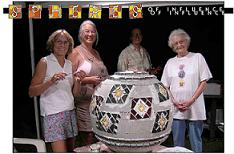
What About My Neighborhood?
Park DuValle and Parkview are only two examples of neighborhoods that have been successfully restored. Googling the term “neighborhood revitalization” yields a long list of government programs designed to assist blighted communities. The key to taking advantage of such programs is collaboration. Block-level organizations such as Neighborhood Watch know their community's needs best and are uniquely positioned to leverage this knowledge by contributing to the revitalization process. Working step-by-step with city and state officials, builders, and investors, these grassroots organizations can achieve impressive results.
Links
- http://www.hud.gov/offices/pih/programs/ph/hope6/about/ (information about HUD's HOPE VI grant)
- http://www.ci.redding.ca.us/cm/renovations.htm (City of Redding renovation and revitalization projects)
- http://ci.redding.ca.us/redev/parkview.html (City of Redding Revitalization Plan 2000-2002)
In the News
The revitalization projects in Louisville and Redding have received considerable media attention. Below is a sampling:

